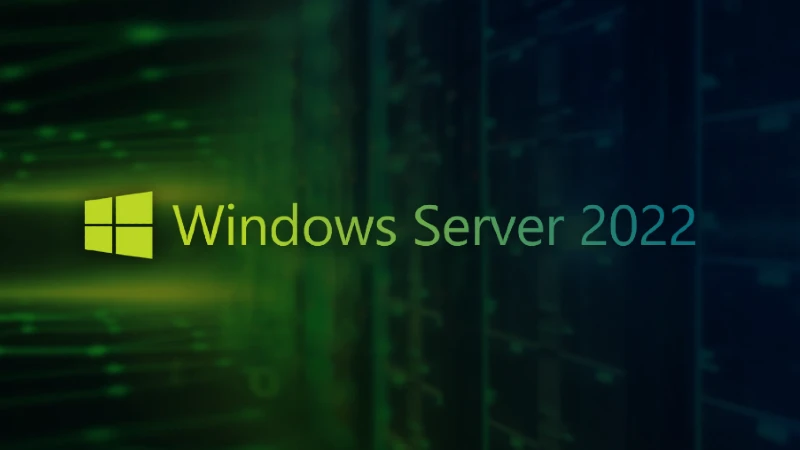Highlights of Windows Server 2022 - from the hoster's perspective

The hosting of systems on Windows Server 2022 is not uncharted territory for aspectra. We showcase in this article some of the most salient improvements of this upgrade.
The latest operating system from Microsoft, Windows Server 2022, has a wealth of new features and improvements. The hosting of systems on Windows Server 2022 has now been running stably at aspectra for a while, and we are ready for new customer systems. The most important enhancements include improved virtualization, cloud integration and security features. The highlights from the perspective of our systems engineers are:
Secure data on connection to the server
- Transport: HTTPS and Transport Layer Security (TLS) 1.3 are enabled by default on Windows Server 2022. The security protocol encrypts data to provide a secure communication channel between two endpoints. HTTPS and TLS 1.3 protect data from clients connecting to the server.
- Secure DNS: DNS-over-HTTPS (DoH) encrypts DNS queries using HTTPS protocol. This prevents eavesdropping and DNS data tampering - and keeps traffic as private as possible.
- SMB AES-256 encryption: The AES-256-GCM and AES-256-CCM cryptographic methods for Server Message Block (SMB) encryption are now supported. Once connected to another computer that supports the advanced encryption method, Windows Server 2022 automatically negotiates it.
- Microsoft Edge: The browser replaces Internet Explorer in Windows Server 2022. Microsoft Edge is based on Chromium Open Source. The installation variant "Server with desktop display" is also possible with Microsoft Edge.
Start applications faster and update more easily
- Smaller images: The image size of Windows containers is now reduced by up to 40 percent. This results in up to 30 percent faster startup times and better performance.
- Hotpatching: Thanks to hotpatching, updates can be installed during operation without the need to restart after installation. (Microsoft explains here how Windows Server Hotpatching works)
Improved speed thanks to performance enhancements
- TCP performance enhancements: HyStart++ reduces packet loss at connection startup and RACK reduces Retransmit TimeOuts (RTO). These features provide smoother network data flow and better performance at high speeds.
- UDP performance enhancements: The User Datagram Protocol (UDP) is becoming more popular - and consequently needs to perform better. Windows Server 2022 therefore includes UDP Segmentation Offload (USO) and UDP Receive Side Coalescing (UDP RSC). USO uses the specialized hardware of the network adapter to send UDP packets. UDP RSC coalesces packets to reduce CPU usage for UDP processing.
- SMB compression: Server Message Block (SMB) is enhanced in Windows Server 2022. Files are now automatically compressed when transferred over the network. This allows for much faster transfers, especially on slow or heavily loaded networks.
Leveraging memory capacity
- Advanced Caching: Important data is automatically stored on faster disks, less critical data on slower disks. As a result, access during read and write operations is faster.
- Faster repair: The hard disk is repaired faster in Windows Server 2022 in the event of a server restart or hardware failure.
Optimizations for future-proof IT
In general, Windows Server 2022 is based on the 2016 platform, so all versions from 2016 to 2022 work together smoothly. Upgrading from 2016 is therefore not a must - unless you want to use the new features of Windows Server 2022. And there are a number of exciting new features and optimizations: From improved security features to new virtualization management tools, Microsoft's new server OS is a highly recommended upgrade.
Update Windows Server 2012 on time
Support for Windows Server 2012 and Windows Server 2012 R2 will end on October 10, 2023 (End of Life). This is in line with Microsoft's Fixed Lifecycle Policy, which states that Microsoft will provide 5 years of Mainstream Support (Comprehensive coverage, including Feature Requests, Design Change Requests and Performance Updates) and another 5 years of Extended Support (Security Updates only). After that, no security updates, bug fixes, technical support, or online technical content will be provided for these products.
For customers who need to run certain older products after support expires, Microsoft offers a premium plan called Extended Security Update (ESU) as a last resort. This allows some updates to be obtained for up to three years after the Extended Support period expires. However, these are limited exclusively to "critical" or "important" security updates for Windows Server 2012 R2.
Anyone still using an older version of Windows Server would be well advised to consider migrating to Windows 2022.
aspectra is happy to support the migration of systems with older OS versions to Windows Server 2022. Contact us to find out together the best approach for your use case.
-
Windows Server 2022 now generally available—delivers innovation in security, hybrid, and containers (Microsoft Windows Server Blog)
-
Microsoft explains how Windows Server Hotpatching works (ghacks.net)
-
End of Life – Was tun, wenn der Zyklus einer Software endet (aspectra-Blog)

